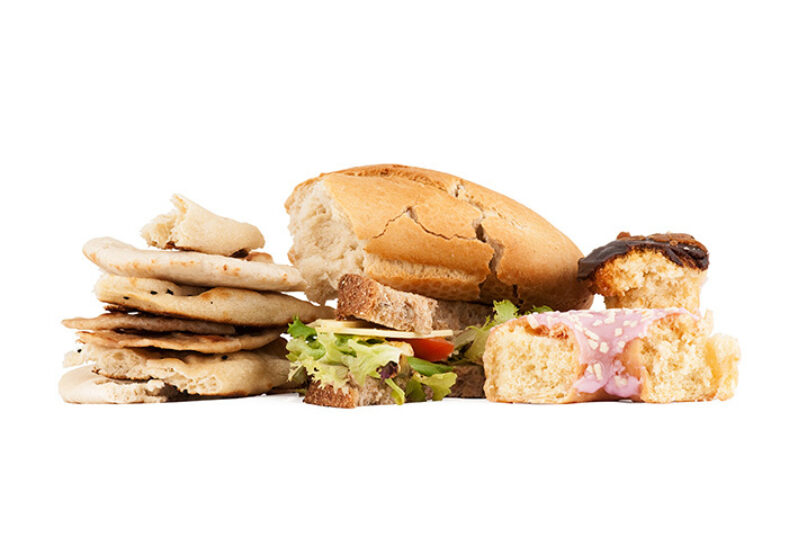Last Updated: 26 September 2023
Have you ever pondered the fate of your food waste in the UK, when it's separated from your regular rubbish? In an era where sustainability and waste reduction are paramount, understanding the journey of your discarded food can be enlightening and important.

In this blog post, we'll show you where your food waste ends up, how it finds its new purpose and how it can positively impact the environment.
What is food waste?
Food waste is usually categorised as any food or animal by-product that was once destined for the food chain but can no longer be consumed by humans safely.
How to dispose of food waste
Food waste recycling starts right in your kitchen. When you segregate your food scraps from non-organic waste, you're taking the initial stride towards responsible disposal. Using a dedicated food waste bin, caddy or composting system transforms your kitchen cast-offs into a valuable source of organic material, ready for sustainable transformation.
Where does the food waste go?
Once your food waste is efficiently sorted, it's collected by waste management services or local authorities, wherever food waste collections are made regularly. These organisations employ specialised vehicles equipped for the transportation of organic waste. Their efforts ensure that organic waste remains isolated from other refuse, preventing contamination and preserving the quality of the organic material. They then bring the food waste to one of our anaerobic digestion facilities in the UK.
Arrival at the recycling facility
Upon arrival at our recycling facilities, your food waste embarks on its journey of metamorphosis. Here, it joins thousands of tonnes of organic material destined for a second life. Our facilities at Severn Trent Green Power use anaerobic digestion to treat this material, macerating it, mixing it with liquids then stirring it for up to 90 days in large digester tanks before pasteurising it.
Anaerobic digestion - how it works
Anaerobic digestion is a natural biological process that occurs in the absence of oxygen. It's similar to the digestive processes in our own bodies but on a much larger scale. Here's how it works:
- Preparation: Food waste is blended with other organic liquid materials and placed in an oxygen-free environment, forming what's known as 'soup'.
- Microbial action: Natural microorganisms, including bacteria and archaea (methanogens), commence the breakdown of the organic matter in the soup. They metabolise complex compounds, simplifying them into their base substances.
- Biogas production: As the microorganisms perform their task, they produce biogas as a by-product, primarily composed of methane (CH4) and carbon dioxide (CO2), which can be extracted and turned into a valuable source of renewable energy.
- Digestate: Upon completion of the digestion process, what remains is called digestate. This material is nutrient-rich and can be used as an effective organic fertiliser for farmland.
Energy generation from your food scraps
The most exciting aspect is that the biogas produced during anaerobic digestion isn't wasted. Instead, it's harnessed as a renewable energy source. Methane, the principal component of biogas, can be used for various applications, including electricity generation, heating, and even as a clean transportation fuel. By recycling food waste into biogas, we reduce our reliance on fossil fuels and mitigate the harmful environmental effects of energy production.
The environmental impact
Your food waste doesn't simply vanish when separated; it contributes to a more sustainable future. Recycling food waste through anaerobic digestion yields numerous positive environmental impacts:
- Reduced methane emissions: By diverting organic waste from landfills, we significantly diminish the release of methane, a potent greenhouse gas contributing to climate change.
- Cleaner energy: Biogas generated from food waste offers a clean and renewable energy source, reducing the carbon footprint of energy production.
- Circular economy: Recycling food waste establishes a closed-loop system where waste transforms into a valuable resource, promoting sustainable practices and waste reduction.
Conclusion
The next time you deposit your food scraps into a dedicated bin, remember that it's the beginning of an extraordinary journey. Your food waste undergoes a carefully-managed anaerobic digestion process, leading to the creation of biogas and nutrient-rich digestate. This sustainable approach not only curtails methane emissions but also generates clean energy. It's a simple action with profound potential for positive change, contributing to a greener and more sustainable future for all.
Check out our food waste page to find out more about how we process food waste and turn it into energy.